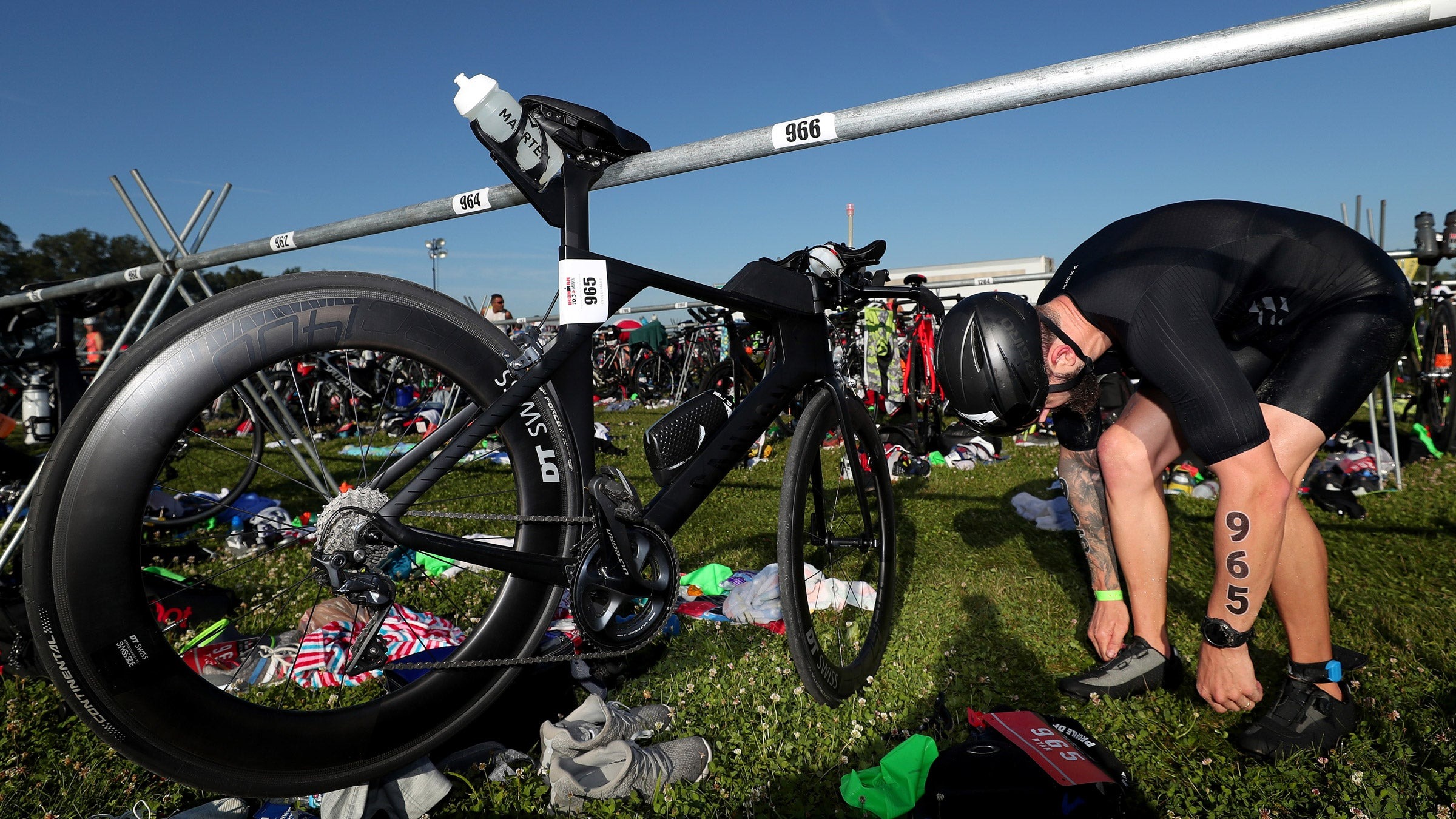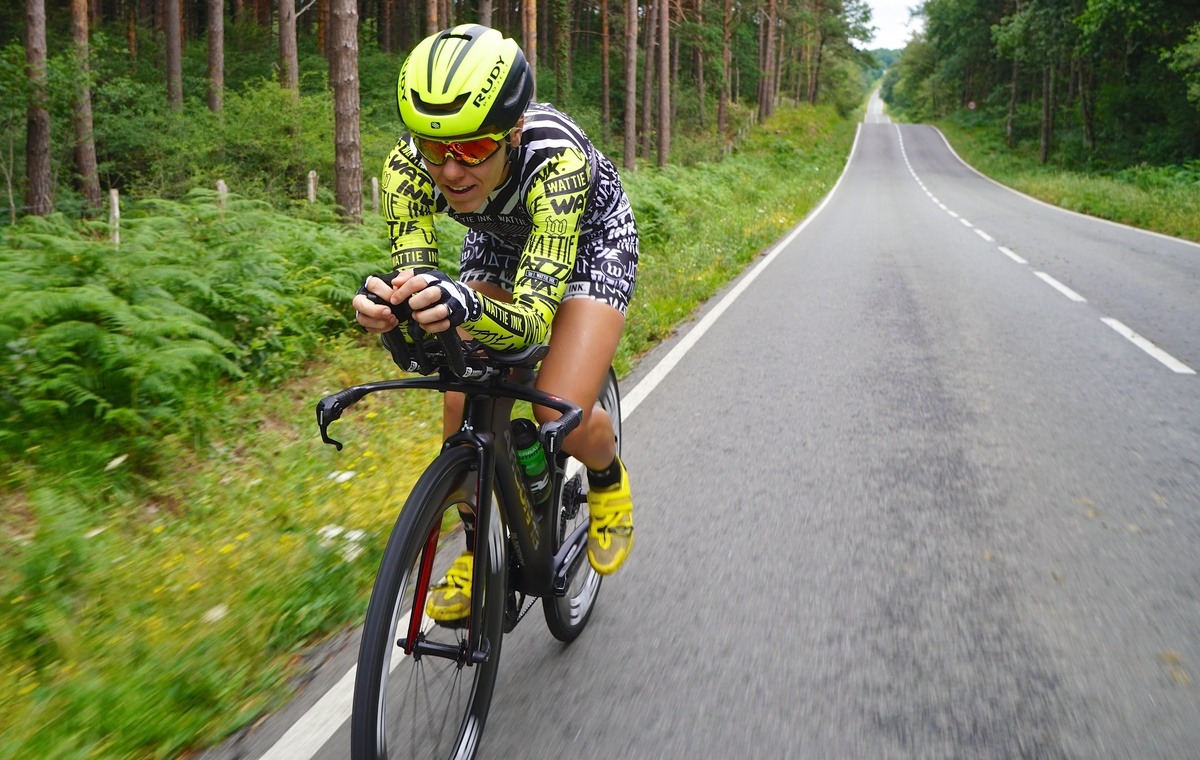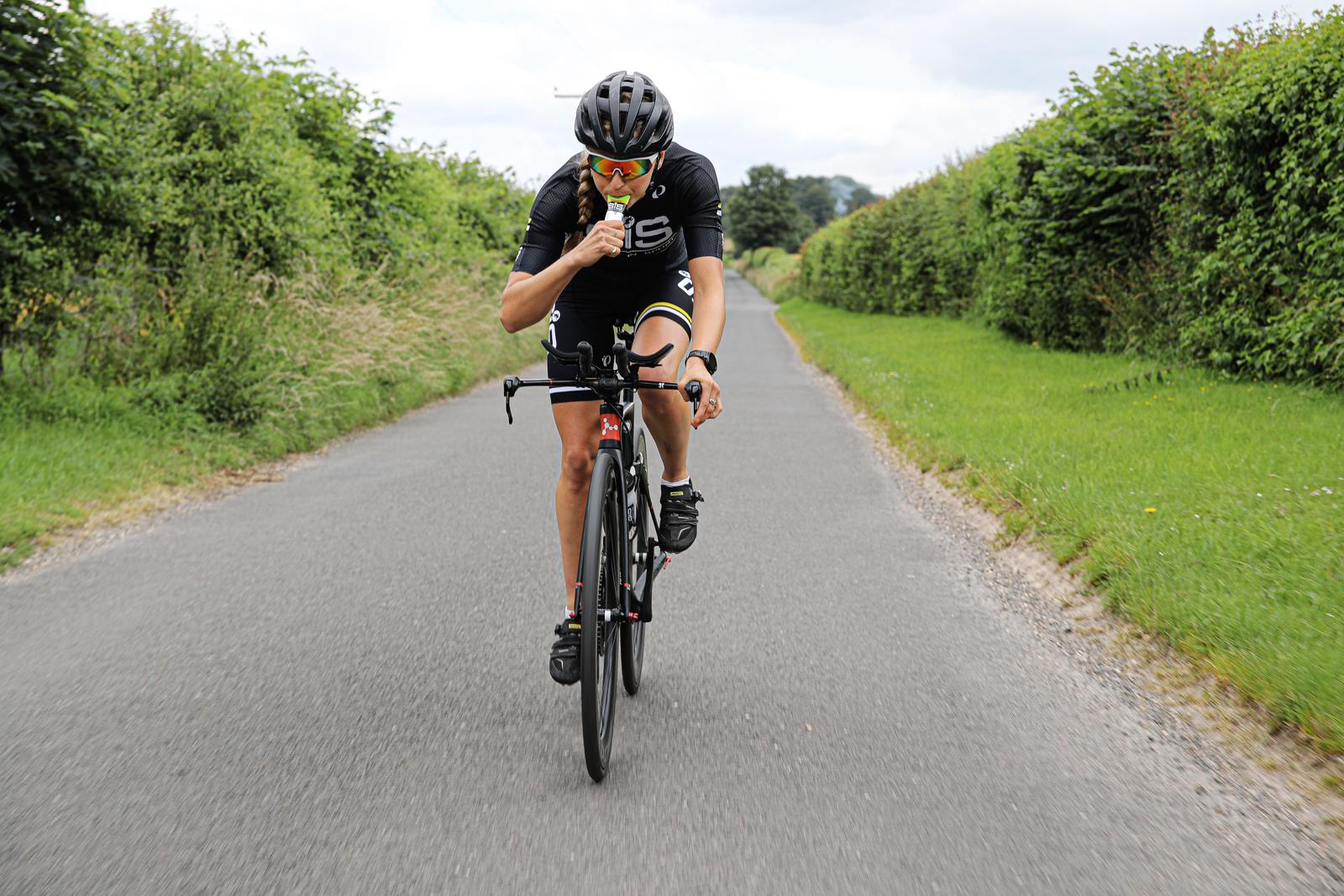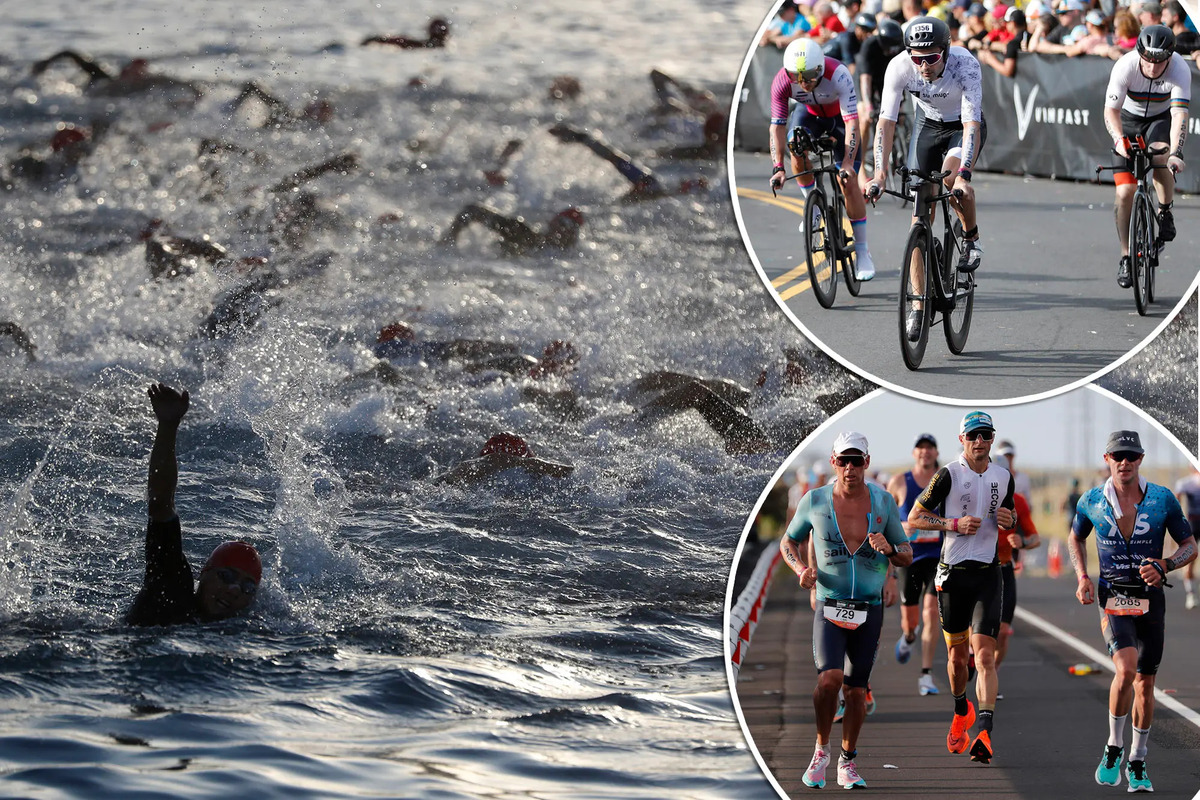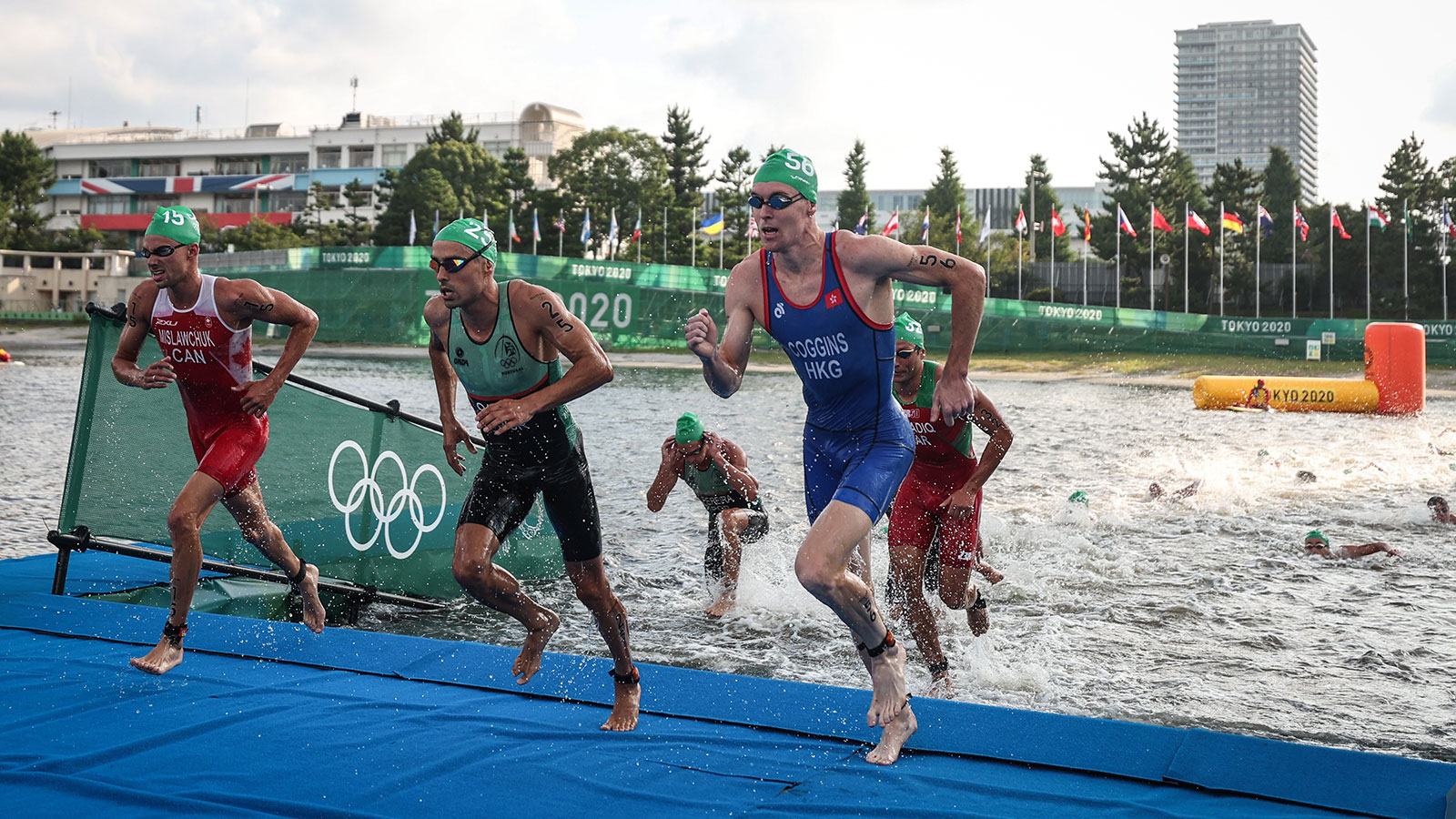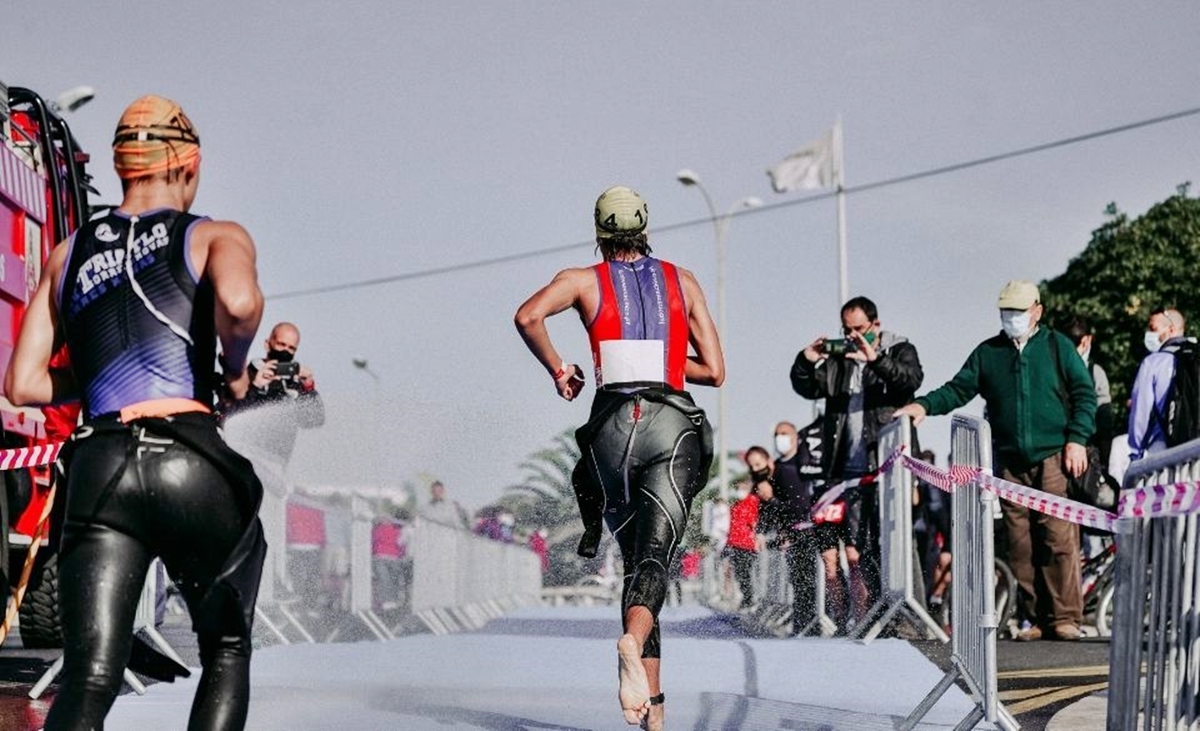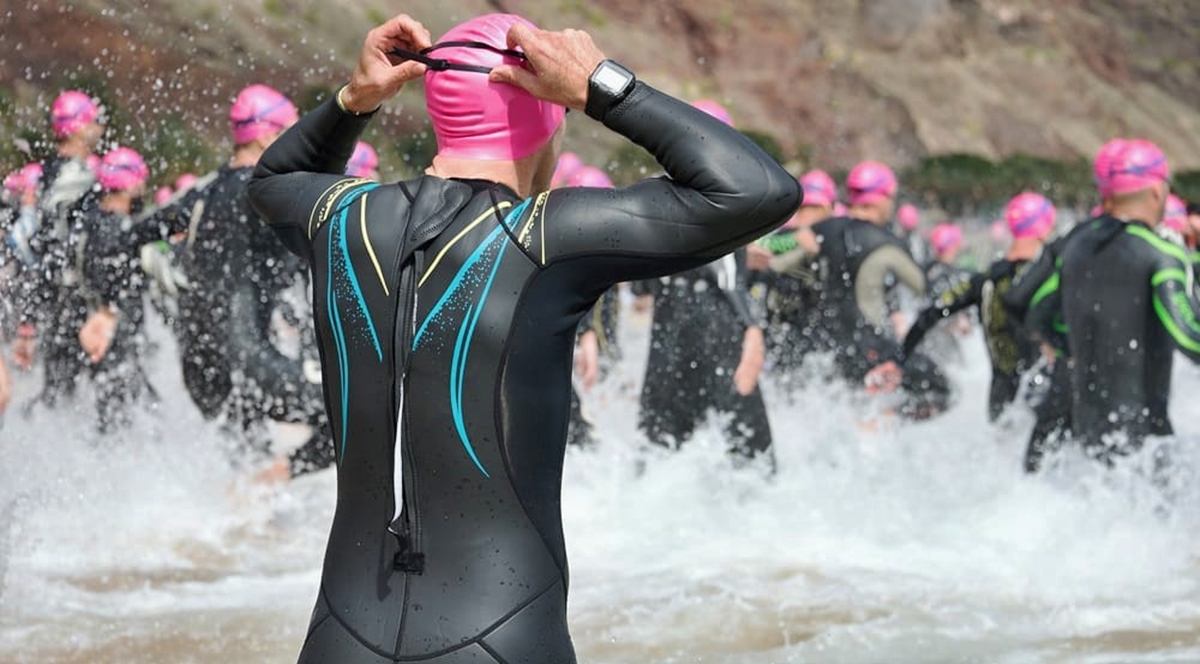Home>Misc>Featured>How Much Water Should You Drink During A Triathlon
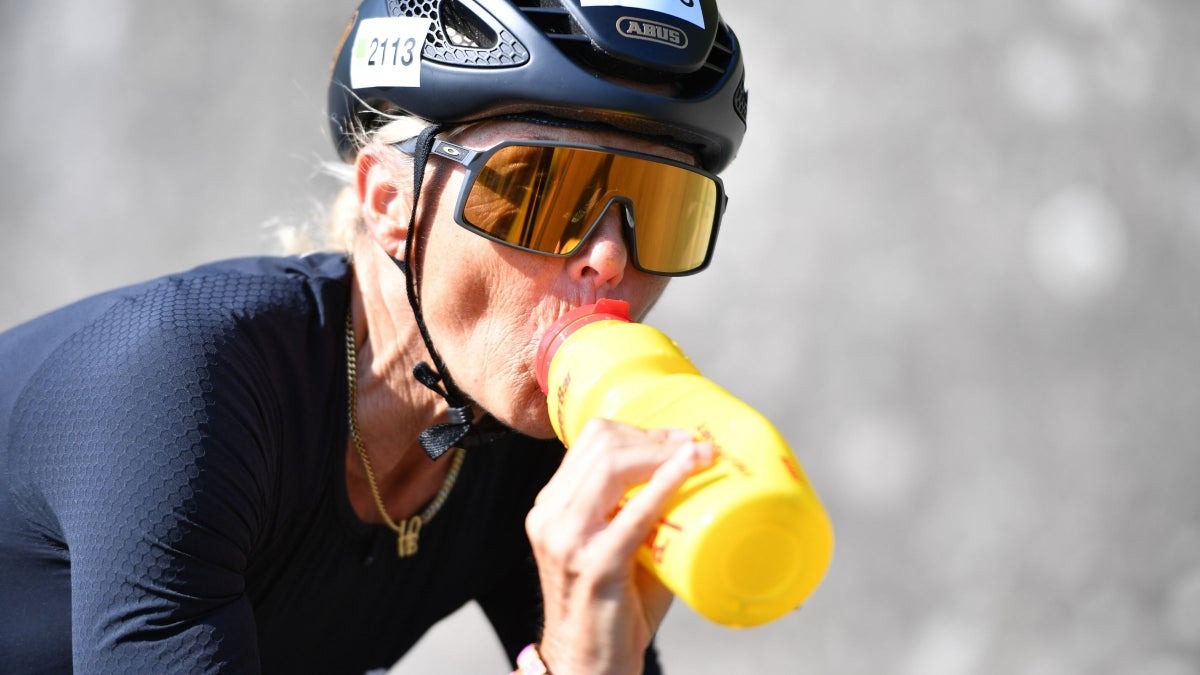

Featured
How Much Water Should You Drink During A Triathlon
Modified: October 3, 2023
Find out the importance of staying hydrated during a triathlon and how much water you should drink to perform your best. Featured article.
Introduction
Welcome to the world of triathlons, an endurance sport that combines swimming, cycling, and running into one grueling event. Engaging in a triathlon requires months of training, discipline, and mental fortitude. One crucial aspect of triathlon training and racing is proper hydration.
Hydration plays a vital role in athletic performance, and in a demanding sport like triathlon, it becomes even more essential. Proper hydration ensures that your body functions optimally, maintains core body temperature, and supports muscle contractions. Dehydration, on the other hand, can lead to decreased performance, muscle cramps, fatigue, and even serious health risks.
This article will delve into the factors affecting water consumption during a triathlon, the different strategies for staying hydrated during each leg of the race, the importance of electrolyte replacement, the signs of dehydration and overhydration, and post-race hydration for recovery.
Whether you’re a seasoned triathlete or a newbie preparing for your first race, understanding how much water you need to drink during a triathlon is crucial for achieving optimal performance and avoiding dehydration-related issues. So, let’s dive in and explore the world of hydration in triathlons.
Importance of Hydration in Triathlons
Hydration is a critical factor in triathlon performance. During a triathlon, athletes face intense physical exertion and prolonged exposure to the elements, making adequate hydration vital for both safety and success.
Proper hydration is essential for maintaining body temperature, lubricating joints, delivering nutrients to muscles, and removing waste products. Inadequate hydration can lead to dehydration, which can significantly impair performance and increase the risk of heat-related illnesses.
Dehydration can negatively impact your cardiovascular system, causing your heart rate to increase and your blood volume to decrease. This reduces your body’s ability to deliver oxygen and nutrients to your working muscles, leading to fatigue and decreased performance.
In addition, dehydration can impair your body’s ability to regulate temperature. As you sweat, your body loses both water and electrolytes, and when you become dehydrated, your ability to sweat efficiently diminishes. This can lead to an increased risk of overheating and heatstroke.
Proper hydration also plays a role in preventing muscle cramps. Dehydration can lead to an imbalance in electrolyte levels, specifically sodium and potassium, which are crucial for muscle function. When these electrolyte levels are disrupted, it can result in muscle contractions and cramps, hindering performance and causing discomfort.
Hydration is not only important during the race itself but also before and after. Pre-race hydration ensures that you start the race in a hydrated state. Post-race hydration aids in recovery and replenishing fluid and electrolyte levels that were depleted during the race.
Overall, maintaining proper hydration throughout a triathlon is vital for sustaining performance, preventing heat-related illnesses, minimizing muscle cramps, and ensuring a safe and enjoyable race experience. In the following sections, we will explore various strategies to stay hydrated during each leg of the race, as well as the importance of electrolyte replacement.
Factors Affecting Water Consumption during a Triathlon
Several factors contribute to the amount of water an athlete should consume during a triathlon. Understanding these factors is crucial for maintaining proper hydration levels throughout the race.
1. Duration of the race: The duration of the race plays a significant role in determining water consumption. A longer race, such as a full Ironman, will require more fluids compared to a sprint triathlon. As the duration increases, so does the need for hydration to counteract fluid loss through sweat.
2. Individual sweat rate: Every athlete has a different sweat rate, influenced by factors such as age, physiology, acclimatization, and training level. A higher sweat rate indicates a greater loss of fluids and electrolytes, necessitating increased water intake during the race.
3. Environmental conditions: The environmental conditions, including temperature, humidity, and altitude, have a significant impact on fluid loss. Hot and humid conditions increase sweating, leading to higher water requirements. Similarly, racing at high altitudes can result in increased dehydration due to accelerated breathing and increased fluid loss.
4. Intensity of the race: The intensity at which an athlete is racing affects fluid loss. Higher intensities typically generate more sweat and result in increased water needs compared to lower intensity races.
5. Hydration status before the race: The pre-race hydration status is crucial in determining the initial fluid deficit an athlete may have at the start of the race. Starting the race already dehydrated puts athletes at a disadvantage and requires additional fluid intake during the race.
6. Individual preferences and tolerance: Each athlete has unique preferences and tolerances when it comes to fluid intake. Some athletes may prefer sipping on fluids throughout the race, while others may consume larger quantities at specific intervals. It is important to find a hydration strategy that works best for you, ensuring adequate fluid intake without discomfort.
By considering these factors, you can establish an effective hydration plan that addresses your specific needs. In the following sections, we will explore pre-race hydration strategies and hydration guidelines for each leg of the triathlon to help you optimize your performance and stay properly hydrated throughout the race.
Pre-Race Hydration Strategies
Proper hydration before the start of a triathlon is essential to ensure optimal performance and prevent dehydration during the race. Implementing pre-race hydration strategies can help you start the race in a well-hydrated state. Here are some key tips:
1. Hydrate consistently leading up to the race: Start hydrating days before the event, gradually increasing your fluid intake. Aim to drink at least 2-3 liters of water per day in the days leading up to the race to ensure that your body is adequately hydrated.
2. Monitor your urine color: Checking the color of your urine can provide valuable insights into your hydration status. Transparent or pale yellow urine generally indicates good hydration, while dark yellow or amber-colored urine may be a sign of dehydration. Aim for a light yellow color for optimal hydration.
3. Include electrolytes in your pre-race hydration: Electrolytes are essential minerals that help maintain fluid balance and support muscle function. Include electrolyte-rich fluids or tablets in your pre-race hydration routine to replenish these important minerals lost through sweating.
4. Avoid excessive alcohol and caffeine: Both alcohol and caffeine can dehydrate the body, so it’s best to avoid or minimize their consumption in the days leading up to the race.
5. Hydrate strategically on race day: On the morning of the race, aim to drink about 16-20 ounces (500-600ml) of water 2-3 hours before the start. Then, about 10-20 minutes before the race, consume an additional 8-10 ounces (250-300ml) of water to top off your fluid levels.
Remember, everyone’s hydration needs may vary, so it’s important to understand your body’s unique requirements through trial and error during training. Monitor your body’s response to different hydration strategies and adjust accordingly to find what works best for you.
By following these pre-race hydration strategies, you can start your triathlon properly hydrated, giving yourself the best chance for optimal performance and a successful race.
Hydration During the Swim Leg
The swim leg of a triathlon presents a unique challenge when it comes to hydration. Unlike the bike and run legs, athletes are unable to consume fluids during the swim. However, proper hydration leading up to the swim leg can still have a significant impact on performance. Here are some strategies to consider:
1. Pre-swim hydration: Prior to the start of the race, ensure that you are well-hydrated. Drink 8-10 ounces (250-300ml) of water 2-3 hours before the swim to top off your fluid levels. Avoid excessive consumption to prevent the need for bathroom breaks during the race.
2. Sip water in the transition area: During the transition from the swim to the bike leg, take small sips of water if allowed in the race rules. This can help replenish any fluid loss during the swim, preparing you for the next leg.
3. Focus on post-swim hydration: After completing the swim leg, prioritize rehydration during the transition. Consume fluids such as water or electrolyte-rich sports drinks to replenish any fluid loss incurred during the swim.
While it may not be possible to consume fluids during the swim, maintaining proper hydration before and after the swim leg is essential. Hydrating adequately before the race and rehydrating during the transition will help set the stage for the rest of the triathlon.
Keep in mind that swimming in open water may cause additional fluid loss due to factors such as immersion diuresis, where the body produces more urine in response to being submerged in water. Therefore, ensuring proper pre-swim hydration becomes even more crucial.
Stay tuned as we move on to discuss hydration strategies specifically for the bike leg of the triathlon.
Hydration During the Bike Leg
The bike leg of a triathlon is typically the longest segment and presents ample opportunities for hydration. Proper fluid intake during this leg is crucial to keep your body hydrated, maintain performance, and prevent dehydration. Here are some key strategies to consider:
1. Hydration plan: Develop a hydration plan before the race that outlines when and how much fluid you will consume during the bike leg. This will help you stay organized and ensure consistent hydration throughout the ride.
2. Water vs. sports drinks: Determine whether you will rely on plain water or sports drinks for hydration during the bike leg. Sports drinks provide not only hydration but also electrolytes that are lost through sweat. They can be particularly beneficial for longer rides or in hot conditions.
3. Utilize a hydration system: Invest in a hydration system that allows you to carry fluids on your bike. This can include water bottles mounted on your bike frame or a hydration pack worn on your back, depending on your personal preference.
4. Set a schedule: Establish a schedule for drinking fluids during the bike leg. Aim to take a sip of fluid every 10-15 minutes to maintain consistent hydration throughout the ride. Remember to drink even if you don’t feel thirsty, as thirst is not always an accurate indicator of hydration status.
5. Monitor your sweat rate: Pay attention to your sweat rate during training rides to gauge your fluid needs. Weighing yourself before and after rides can help determine how much fluid you lose through sweat. Aim to replace 80-100% of the weight lost with fluids during the ride.
6. Maintain balance: While hydration is important, be sure not to overhydrate. Overhydration, also known as hyponatremia, can lead to a dangerous imbalance of electrolytes in the body. Listen to your body’s signals and adjust your fluid intake accordingly.
Remember, the bike leg provides ample opportunities to hydrate, so take advantage of them. Consistent hydration during this segment will help keep you energized, maintain your focus, and set you up for a strong finish in the triathlon.
In the next section, we will explore hydration strategies specifically for the run leg of the race.
Hydration During the Run Leg
The run leg of a triathlon puts a significant demand on the body, making proper hydration essential for maintaining performance and preventing dehydration. As the final leg of the race, staying hydrated during the run can make a crucial difference. Here are some key strategies to follow:
1. Carry fluids: If race rules permit, carry a handheld water bottle or wear a hydration belt or vest that allows you to have easy access to fluids during the run leg. This ensures that you can hydrate whenever needed, without relying solely on aid stations.
2. Aid station strategy: If there are aid stations available on the course, plan your approach in advance. Decide whether you will walk briefly to drink at each station or grab a cup and continue running while sipping. Remember to thank the volunteers for their support!
3. Sip, don’t chug: Rather than taking large gulps of fluid, take small sips at regular intervals during the run. This prevents the discomfort of a full stomach and allows for better absorption and utilization of the fluids.
4. Electrolyte replenishment: Along with water, consider consuming electrolyte-rich sports drinks or gels during the run leg. Electrolytes such as sodium and potassium play a crucial role in maintaining proper muscle function and fluid balance.
5. Listen to your body: Pay attention to your body’s signals of thirst and fatigue. Drink when you feel the need, but don’t overhydrate. Drinking to thirst and maintaining a balance is key to avoiding both dehydration and the risks of overhydration.
6. Stay cool: When running in hot conditions, consider pouring water over your head or neck at aid stations to help cool down. This can provide temporary relief from the heat and prevent overheating.
Remember, every athlete is different, so it’s important to tailor your hydration strategy to your unique needs and preferences. Practice your hydration plan during training runs to fine-tune it before race day.
By properly hydrating during the run leg, you’ll have the energy and focus to complete the final stretch of the triathlon with confidence. In the next section, we’ll discuss the importance of electrolyte replacement during a triathlon.
Electrolyte Replacement during a Triathlon
Electrolytes are minerals in your body that help maintain proper fluid balance, muscle function, and overall hydration. During a triathlon, particularly in longer races or in hot and humid conditions, you’ll lose significant amounts of electrolytes through sweat. It’s important to replenish these electrolytes to support optimal performance and prevent imbalances. Here’s what you need to know about electrolyte replacement during a triathlon:
1. Importance of electrolytes: Electrolytes, including sodium, potassium, magnesium, and calcium, play crucial roles in muscle contraction, nerve function, and maintaining fluid balance. They help prevent muscle cramps, support hydration, and aid in proper cellular function.
2. Sports drinks and electrolyte tablets: Sports drinks formulated specifically for athletes often contain a blend of electrolytes, making them a convenient option for electrolyte replacement during a triathlon. Electrolyte tablets or powders that can be added to water are also available, allowing you to customize your electrolyte intake based on your needs and preferences.
3. Timing of electrolyte consumption: It’s important to consume electrolytes consistently throughout the race, starting from the swim leg and continuing into the bike and run legs. This ensures that your electrolyte levels remain balanced and supports optimal performance.
4. Balancing electrolyte intake with fluid consumption: When consuming electrolytes, it’s important to balance your intake with proper hydration. Too many electrolytes without enough fluids can lead to dehydration, while excessive fluid intake without sufficient electrolytes can dilute your electrolyte levels. Strive for a balance by following the guidelines provided on the electrolyte product you choose and monitoring your hydration status.
5. Listen to your body: Each athlete has unique electrolyte needs, and it may take some trial and error to determine what works best for you. Pay attention to how your body feels during training sessions and adjust your electrolyte intake accordingly based on factors such as sweat rate, weather conditions, and race duration.
6. Practice during training: Just like with any other aspect of triathlon preparation, training sessions are an ideal time to practice your electrolyte replacement strategy. Experiment with different products, consumption timings, and amounts to find the approach that works best for you.
Remember, electrolyte replacement is just as important as hydration during a triathlon. By actively replenishing electrolytes throughout the race, you’ll enhance your performance, prevent muscle cramps, and maintain proper fluid balance, ultimately helping you cross the finish line strong.
In the following section, we’ll explore the signs of dehydration and overhydration to help you effectively monitor your hydration status during a triathlon.
Signs of Dehydration and Overhydration
Being able to recognize the signs of dehydration and overhydration is crucial for maintaining optimal performance and staying safe during a triathlon. Both conditions can significantly impact your race, so it’s important to be aware of the symptoms. Here are the signs to watch out for:
1. Dehydration:
- Thirst: Feeling thirsty is a common early sign of dehydration.
- Dark urine: Urine that is darker in color, such as amber or dark yellow, is an indication of dehydration.
- Dry mouth and lips: Lack of saliva and dryness in the mouth and lips can be signs of dehydration.
- Fatigue: Dehydration can lead to fatigue and decreased energy levels during the race.
- Dizziness and lightheadedness: Feeling dizzy or lightheaded can be a result of dehydration.
- Headaches: Dehydration can cause headaches and impaired cognitive function.
- Muscle cramps: Electrolyte imbalances due to dehydration can lead to muscle cramps.
2. Overhydration (Hyponatremia):
- Nausea and vomiting: Excessive fluid intake can lead to feelings of nausea and even vomiting.
- Confusion and disorientation: An imbalance in electrolytes can cause confusion, disorientation, and impaired judgment.
- Headaches: Overhydration can also lead to headaches and a sense of feeling bloated.
- Swelling: Swelling, particularly in the hands, feet, or face, can be a sign of hyponatremia.
- Seizures and unconsciousness: In severe cases, overhydration can lead to seizures or loss of consciousness.
It’s important to note that overhydration, or hyponatremia, is less common than dehydration in endurance events such as a triathlon. However, it’s still important to be mindful of your hydration levels and not excessively consume fluids.
To prevent dehydration and overhydration, it’s crucial to listen to your body, drink according to your thirst, and monitor your urine color. Having a hydration plan in place and practicing it during training sessions will also help you better understand your individual fluid needs.
By staying vigilant and recognizing the signs of dehydration and overhydration, you can adjust your fluid intake appropriately to maintain optimal hydration levels throughout the race.
In the next section, we’ll discuss post-race hydration and recovery strategies to help your body bounce back after the triathlon.
Post-Race Hydration and Recovery
After crossing the finish line of a triathlon, your body needs proper hydration and recovery strategies to help restore and replenish what was lost during the race. Post-race hydration and recovery are crucial for optimizing your recovery, minimizing muscle soreness, and preparing your body for future training. Here are some key strategies to consider:
1. Rehydrate immediately: As soon as you finish the race, begin rehydrating by drinking fluids. Opt for water, electrolyte-rich sports drinks, or a combination of the two to replenish fluids and electrolytes.
2. Replace electrolytes: Along with fluids, focus on replacing electrolytes lost through sweat during the race. Sports drinks or electrolyte tablets can help restore these essential minerals.
3. Eat nutrient-dense foods: Consume a balanced post-race meal or snack that includes carbohydrates, protein, and healthy fats. This will provide your body with the necessary nutrients to aid in muscle repair and replenish glycogen stores.
4. Stretch and cool down: Engage in gentle stretching and a cool-down routine to help relieve muscle tension and prevent stiffness. This will also promote blood flow and enhance the recovery process.
5. Rest and sleep: Allow your body ample time to rest and recover after the triathlon. Adequate sleep plays a crucial role in the recovery process, so aim for 7-9 hours of quality sleep each night.
6. Avoid excessive alcohol and caffeine: Both alcohol and caffeine can have dehydrating effects on the body, so it’s best to limit their consumption during the post-race recovery period. Instead, focus on hydrating fluids and nourishing foods.
7. Listen to your body: Pay attention to any lingering soreness, fatigue, or signs of injury. If necessary, seek professional advice from a healthcare provider or sports therapist to address and prevent potential issues.
Remember, each athlete’s recovery timeframe may vary, depending on factors such as race distance and individual fitness level. Take the time to listen to your body and give yourself the necessary recovery period before diving back into intense training or racing.
By implementing these post-race hydration and recovery strategies, you’ll promote optimal recovery, help your body bounce back, and set the foundation for future triathlon success.
Now that we’ve explored the importance of post-race hydration and recovery, let’s wrap up and reflect on the key takeaways from this article.
Conclusion
Hydration is a critical factor in triathlon performance, ensuring optimal physical and mental function throughout the race. From the pre-race preparation to the swim, bike, and run legs, understanding how to properly hydrate can make a significant difference in your performance, recovery, and overall race experience.
Factors such as race duration, environmental conditions, individual sweat rates, and personal preferences all play a role in determining your hydration needs during a triathlon. Preparing with a hydration strategy, monitoring your body’s signals, and practicing your plan during training sessions will help you find the optimal balance of fluids and electrolytes.
During the swim leg, focusing on pre-race hydration and prioritizing post-swim replenishment are critical. When biking, establishing a hydration plan, relying on sports drinks or water, and maintaining consistent intake throughout the ride are key strategies. In the run leg, carrying fluids, using aid stations strategically, and listening to your body’s cues will help you stay hydrated.
Electrolyte replacement is as important as hydration, as these minerals support muscle function and fluid balance. Recognizing the signs of dehydration and overhydration is essential for adjusting your fluid intake accordingly and maintaining optimal performance and safety during the race.
Finally, post-race hydration and recovery strategies allow your body to recover, replenish nutrients, and prepare for future training. Rehydrating with fluids and electrolytes, consuming nutrient-dense foods, engaging in gentle stretching, and prioritizing rest and sleep all contribute to a successful recovery process.
By implementing these hydration and recovery strategies, you’ll be better equipped to handle the physical demands of a triathlon, optimize your performance, and minimize the risk of dehydration-related issues. Remember, every athlete is unique, so monitoring your body, adjusting your approach as needed, and finding what works best for you is key to achieving triathlon success.
Now, armed with the knowledge and understanding of proper hydration in triathlons, go out there and conquer your next race with confidence and a well-hydrated body!
